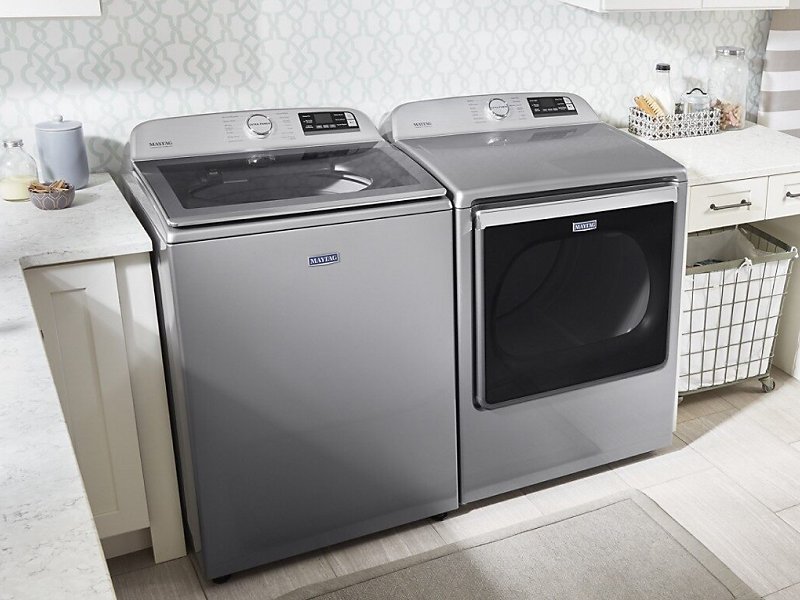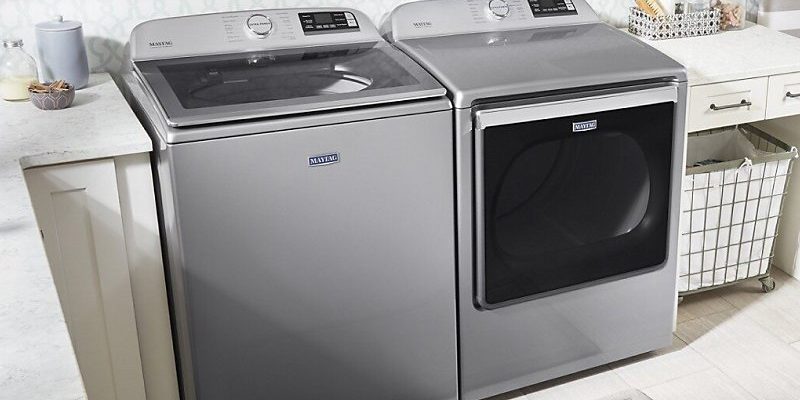
Maybe you’ve just bought a house with a shiny Maytag laundry set, or maybe you’re selling yours to a friend who’s newly moved out. It’s totally normal to wonder what happens to that infamous warranty—the piece of paper (or, more often, the online registration) that promises protection if things go sideways. Is the Maytag laundry warranty as portable as a sock in the spin cycle, or does it stay put once the first owner lets go?
Here’s the thing: Understanding how warranty transfer works (or doesn’t) can save you a heap of frustration. Let’s break it down like we’re chatting over coffee—and sort out exactly what’s possible, what’s not, and what you should do next with your Maytag laundry appliance warranty.
What Does a Maytag Laundry Appliance Warranty Actually Cover?
Before we dive into transfers, let’s get clear on what the warranty even means. When you buy a new Maytag washer or dryer, it usually comes with a manufacturer’s warranty—think of it as a safety net against factory defects or unexpected breakdowns that aren’t your fault.
Most standard Maytag warranties cover:
- Parts and labor for specific repairs (usually 1 year for most appliances)
- Certain components like the motor or drum—sometimes covered for longer (like 10 years, parts only)
- Fixes for issues that aren’t caused by user error or neglect
But—and this is where people slip up—warranties don’t cover everything. Accidental damage? Not covered. Normal wear and tear or poor installation? Not covered. And if you try to repair it yourself or use unapproved parts, you might accidentally void the warranty, too.
It’s sort of like car insurance. You’re covered for fender benders, not for forgetting to change your oil for three years. Knowing what’s protected helps you see why transferability even matters.
Can You Actually Transfer a Maytag Laundry Appliance Warranty?
You might be hoping for a simple “yes” or “no,” but here’s the reality: Maytag manufacturer warranties are almost always non-transferable. That means the original warranty is tied to whoever bought the machine first. As far as Maytag’s concerned, when the original owner parts with the washer or dryer, the warranty doesn’t move with it.
If you check the fine print in Maytag’s official warranty documents, you’ll likely see language like “This warranty is only valid for the original purchaser.” In lawyer-speak, that leaves little wiggle room.
Honest moment: This rule isn’t unique to Maytag. Most major appliance brands stick to the same policy. They want a clear customer-of-record for things like troubleshooting, code numbers, or replacement parts.
The idea is that warranties are a contract with the person who first bought and registered the appliance. Once that relationship ends, so does the promise of warranty coverage.
Why Don’t Maytag Warranties Transfer to New Owners?
It’s a fair question—especially when things like car warranties or even some electronics protection plans can be transferred to new owners. So why not laundry appliances?
Here’s the logic, as frustrating as it might be:
- Maintenance history is unknown: The manufacturer can’t easily verify how the machine was treated, cleaned, or repaired after leaving the original owner’s hands.
- Registration and proof of purchase: Warranties depend on a clear record of purchase and ownership, usually through registration or sales receipts. Passing those along can get messy.
- Liability and troubleshooting: If the appliance is sold, moved, or repaired by someone else, it’s harder for Maytag to determine the real cause of a problem—or if the warranty should even apply.
Imagine buying a used washer. If the drum gets jammed, Maytag can’t know if it was a factory defect or from the time someone tried to wash a sleeping bag and some sneakers at the same time. The no-transfer rule helps keep things simple (for Maytag, at least).
What About Extended Warranties or Protection Plans?
Now, let’s say you or the original owner bought an extended warranty or a third-party protection plan—maybe through the retailer, or a service like Assurant or SquareTrade. Here’s where it gets interesting, because not all these plans follow the same rules as the Maytag manufacturer warranty.
- Some third-party plans are transferable: If there’s a protection plan, dig up the paperwork. Plans from retailers or insurers sometimes allow you to transfer coverage to the new owner—usually with a form or email request.
- Fees and time limits might apply: Even if allowed, transfers usually have to happen within a certain window (say, 30 days from resale), and sometimes there’s a small fee.
- Proof is everything: You’ll need receipts, a copy of the protection contract, and the new owner’s details.
If you’re buying or selling a Maytag washer or dryer, always ask about third-party warranty paperwork—don’t assume the coverage is gone until you check!
But just to be clear, these special plans aren’t the same as Maytag’s factory warranty. They’re a separate contract, usually with their own customer service, troubleshooting line, or code system for repairs.
What Happens if You Buy a Secondhand Maytag Appliance?
Honestly, a lot of people buy used washers and dryers for the savings. But you might be wondering, “Am I totally out of luck on repairs if something goes wrong?” Not necessarily.
Here’s what’s still possible:
- Out-of-warranty service: Maytag (and many local repair shops) will still fix your appliance—you’ll just have to pay for parts and labor.
- Owner’s manual and troubleshooting: You can download the latest manuals, reset instructions, or troubleshooting guides right from Maytag’s website, even if you’re the second (or third) owner.
- Check for any open recalls: Sometimes, big appliance brands issue recalls for specific models no matter who owns them. You just need your model and serial number.
In other words, not having a transferable warranty doesn’t mean you’re totally on your own. The machine’s still fixable—and you’d be surprised how far a little troubleshooting or routine maintenance can go, even after a warranty expires.
Tips for Sellers: What to Do Before Handing Off a Maytag Appliance
If you’re the one selling a Maytag washer or dryer, there are a few steps worth taking—just to give the new owner a smooth start (and avoid any awkward phone calls later on).
- Be honest about the warranty: Let the buyer know upfront that the original manufacturer warranty won’t transfer—but mention if there’s an extended plan that might.
- Gather up paperwork: Provide manuals, receipts, and any service or code history. This helps the new owner if they need troubleshooting or repairs.
- Clean and reset the machine: Run a cleaning cycle, wipe down filters, and consider resetting the appliance’s “smart” features, if it has them.
- Share tips for maintenance: Passing along your “insider” tips (like how to keep the gasket mold-free or when to replace the battery in smart controls) is always appreciated.
Passing along a little troubleshooting wisdom can go a long way—imagine finding a handwritten “how to avoid sock-eating” tip taped to the inside of your new dryer. That’s gold.
Alternatives: What Are Your Options If You Want Coverage?
So, you’re disappointed that the original Maytag warranty can’t transfer. Is there any way to get protection if you’re not the first owner? Actually, yes—though it’s not always obvious.
- Buy a third-party protection plan: Some companies offer “used appliance” warranties or coverage even if the item’s secondhand. The catch? You’ll probably need to pass an inspection or show a working appliance code.
- Consider local repair shops: Many independent shops provide short-term service guarantees (90 days, 1 year) on any work they do—handy if you’re worried about breakdowns.
- DIY troubleshooting: Maytag’s online resources and community forums can be a lifesaver for code errors, sync problems, or even wiring diagrams. Sometimes, it’s just a stuck filter or a battery swap away from working like new.
- Keep up with maintenance: Regular cleaning, proper loading, and quick response to weird noises or error codes are your best insurance.
The takeaway? Even without a transferable warranty, you’re not helpless. With a little diligence and a willingness to read a few troubleshooting guides, you can keep your Maytag laundry appliance running strong.
Final Thoughts: The Warranty Transfer Bottom Line With Maytag
Honestly, the world of appliance warranties is way more tangled than most people expect. When it comes to Maytag laundry appliances, the short answer is this: the manufacturer’s warranty can’t be transferred to a new owner. It’s tied to the first buyer, and that’s that.
But don’t toss in the towel just yet. If there’s an extended plan, it might be worth a quick check—sometimes those are more flexible. And even without a warranty, you still have plenty of ways to keep your Maytag washer or dryer going strong, from routine maintenance to out-of-warranty repairs.
So whether you’re buying, selling, or just curious, understanding how warranties work is a smart move. It saves you headaches, sets good expectations, and helps you keep your laundry running trouble-free—no matter who officially owns the machine. And at the end of the day, that’s what really matters, right?
